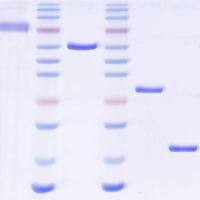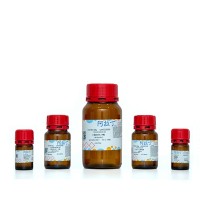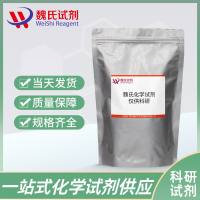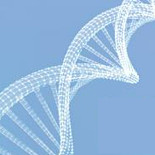材料与仪器
步骤
DAPI的配制及贮存
固体粉末 :避光,2-8 ℃保存,3年没有问题。
贮存液 :用无菌水配制成浓度1 mg/ml 的贮存液,配好后用锡纸包起来,避光,可在-20 ℃下长期保存。(DAPI易溶于水,在PBS中溶解度不高)
使用浓度 :贮存液用1xPBS稀释到终浓度100 ng/ml。
荧光封片液 :0.5 mol/L碳酸盐缓冲液与甘油等体积混合,pH9.5
染色与观察 :制好的玻片上滴加几滴DAPI染液,染色10分钟,流水冲去染液,滤纸吸除多余水分,加一滴荧光封片液,置于荧光显微镜下观察,激发波长360-400nm。
注意事项 :DAPI可能具有致癌性,全部操作过程中必须带塑料或乳胶手套。
推荐厂商 :Invitrogen,Sigma
结构式 :
以下英文介绍摘自Wikipedia 。
DAPI or 4',6-diamidino-2-phenylindole is a fluorescent stain that binds strongly to DNA. It is used extensively in fluorescence microscopy. Since DAPI will pass through an intact cell membrane, it may be used to stain both live and fixed cells.
For fluorescence microscopy, DAPI is excited with ultraviolet light. When bound to double-stranded DNA its absorption maximum is at 358 nm and its emission maximum is at 461 nm. (This emission is fairly broad, and appears blue/cyan.) DAPI will also bind to RNA, though it is not as strongly fluorescent. Its emission shifts to around 500 nm when bound to RNA.
DAPI's blue emission is convenient for microscopists who wish to use multiple fluorescent stains in a single sample. There is fluorescence overlap between DAPI and green-fluorescent molecules like fluorescein and green fluorescent protein (GFP), or red-fluorescent stains like Texas Red, but using spectral unmixing or taking images sequentially can get around this.
Apart from labelling cell nuclei, the most popular application of DAPI is in detection of mycoplasma or virus DNA in cell cultures.
Because DAPI easily enters live cells and binds tightly to DNA, it is toxic and mutagenic. Care should be taken in its handling and disposal.
The Hoechst stains are similar to DAPI in that they are also blue-fluorescent DNA stains which are compatible with both live- and fixed-cell applications
来源:丁香实验








